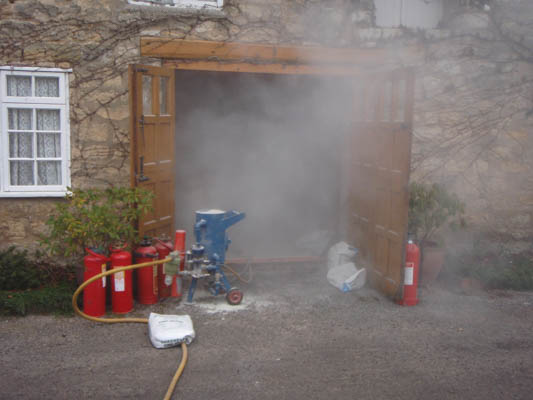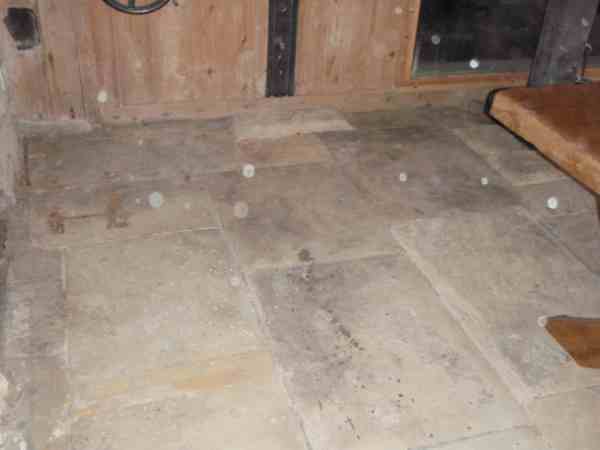Traditional Dry Blasting of Stonework (Brickwork very similar!)
A data sheet on our dry blasting cleaning services, a suitable summary for printing is available in PDF format, internal dry blasting datasheet
Greenleaf Contractors specialise in using a low pressure sand jetting system that has been used nationwide for property restoration, including gaining approval for and subsequently working on many Listed Buildings. The system, in our trained hands, causes minimal damage to an underlying surface and is flexible enough to tackle most property restoration cleaning tasks.
The low pressure sand jet can clean bricks without injecting large quantities of water into the surface, and with minimal surface damage, at the same time, the 'wet' system also captures dirt and abrasive, preventing the health and safety risks associated with dry blasting.
However, the damp nature of the blast does mean that the abrasive and removed dirt / paint stick to surfaces (as can be seen in the wood - sand jet photographs) - this can be washed out, or left to dry and brushed out. But we have now re-discovered that old fashioned, traditional dry blasting can, if the operator is careful, be quite effective at cleaning internal stonework, so we now offer that service as well. It is one of those 'swings and roundabouts' things - the dry blast will use more abrasive and create lots and lots of dust, but is perhaps a little easier to clean up on the day. Brickwork is very similar.
A stained floor in a Listed Grade II water mill - cleaned in March 2008, a sample was undertaken a month before and we found that the staining (caused by the floods of 2007) could be removed by blasting. Dry blasting was the preferred option as the room was also rather full of metal water mill parts - and the sticky nature of the damp blast debris would have meant that pressure washing would be the only 'clean up' option - potentially re-introducing the damp problem that had caused the problem.

Afterwards - cleaning has been successful- and damage has been limited - chasing the last stain out of the stones would inflict excessive damage - and would rip out the pointing. Note the specks of dust (in the flash from the camera) even after sweeping out, bringing the table back in, packing up...
From the outside - of that same room!

The sort of dust cloud generated inside that same room (and house) when dry blasting! Compare this with the photographs elsewhere in this website! We need lots of ventilation and even then will require to stop and let the dust settle several times to make progress - and see how we are doing.
Key Benefits
- Dry - debris can be cleaned up relatively quickly and easily with brush and vacuum
- aggressive - rapid removal of material.
- Keeping to the requirements of BS 8221-1&2 :2000 the British Standard Code of Practice for the Cleaning of Buildings
